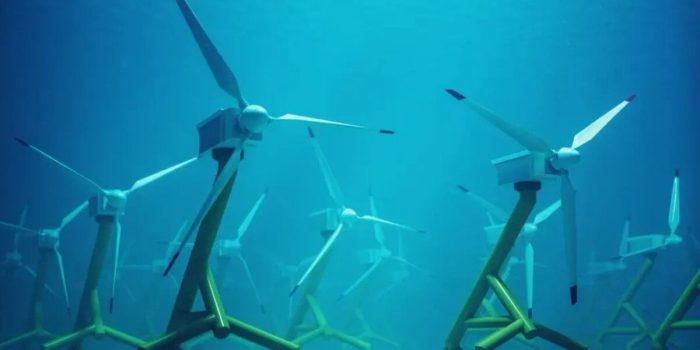A breakthrough in tidal energy technology has been achieved in Scotland, offering a promising avenue for boosting renewable energy generation at a more affordable cost. A team of design engineers from the University of Edinburgh has successfully developed a cutting-edge tidal turbine blade, manufactured at the FastBlade facility in Rosyth, Fife, Scotland. This innovation is anticipated to significantly reduce the levelized cost of tidal energy production.
Tidal energy harnesses the power of ocean tides through specialized turbines. Unlike solar and wind energy, it offers a more predictable energy source. However, its widespread adoption has been hindered by the high costs associated with constructing tidal barrage projects and the need for robust turbines capable of withstanding powerful ocean currents. In the UK, tidal energy currently costs around £178 ($216) per MWh, compared to £65 ($79) for offshore wind, making it less economically competitive.
“We have found a faster, cheaper route to manufacture than the usual tidal blade fabrication process, based on an altered design – we hope the combination of improved design and optimized manufacturing process will contribute to reducing the levelised cost of energy (LCOE) of tidal stream energy, with the long term goal of matching LCOE of offshore wind,” said Dr. Eddie McCarthy, of the University of Edinburgh’s School of Engineering and leader of FastBlade, in a statement.

The University of Edinburgh’s innovative tidal turbine blade employs a novel construction method not previously utilized in blade production. Its monolithic design enhances durability, eliminating the weaker adhesive joints found in traditional rotor blades. This structural improvement promises greater resilience to challenging tidal stream conditions.
Collaborating with Tocardo Turbines and QED Naval, the Edinburgh team manufactured these new turbine blades as part of the European Tidal Stream Industry Energiser Project (TIGER). The project aims to expedite cost reductions and demonstrate up to 8 MW of new tidal energy capacity across various locations in the English Channel region.

To further advance their innovation, the University of Edinburgh team is seeking funding for in-depth testing of a fifth blade. Four completed blades have already been integrated into QED’s Subhub tidal platform, which is undergoing sea trials in Langstone Harbour, off the south coast of England.
This breakthrough offers a ray of hope for tidal energy’s growth, particularly in the UK, where rising energy costs are a concern. Projections indicate that tidal stream energy could provide more than 6 GW of energy to the UK grid by 2050, serving as a substantial and consistent power source. This development represents a significant step toward achieving sustainable and cost-effective renewable energy solutions in the near future.


